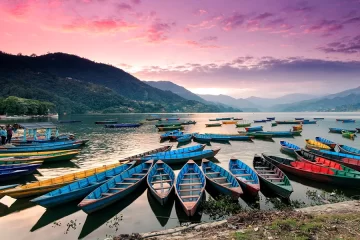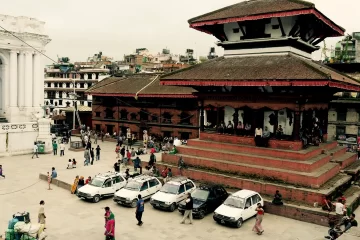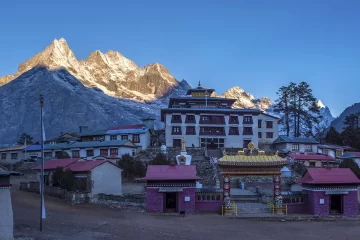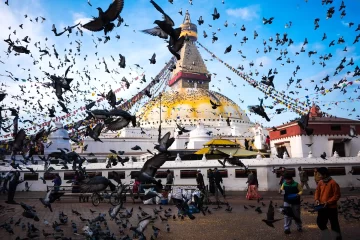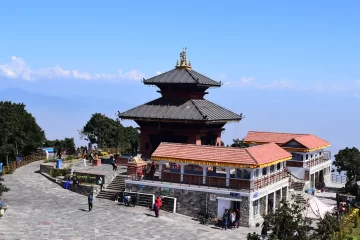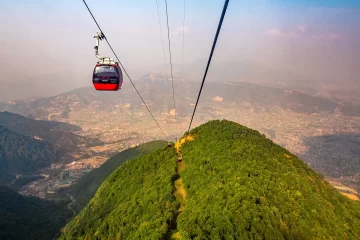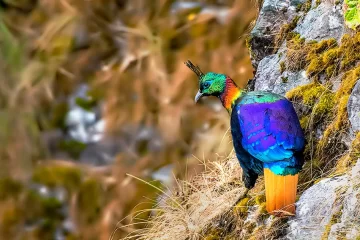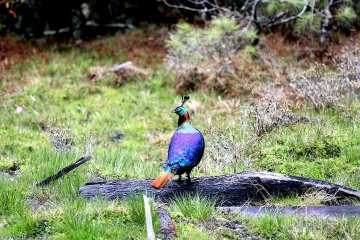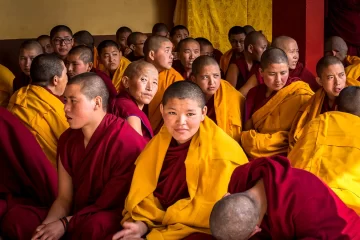Helambu Trek: Explore the Cultural Heritage and Beauty of the Himalayas
The Helambu region is a place of wonder, where the bustling streets of Kathmandu are left behind, replaced by snow-capped mountains and dense forests. It’s a place that offers an unmatched natural beauty, without having to endure a strenuous trek. Helambu trek ideal for those with a tight schedule, who want to experience a taste of mountain life.
The Hyolmo people who inhabit the region have a unique culture, and you can experience it firsthand. Their traditional wooden houses perched on elevated slopes, blending with the landscape, are a sight to behold. The Buddhist monasteries, some centuries old, have intricate architecture that will leave you in awe. And let’s not forget about the exotic flora and fauna that call the region home. From monkeys to deer and birds, you’ll encounter wildlife that’s sure to leave a lasting impression.
And, thus, the Helambu Trek is a cultural and ecological wonder, and the trail is moderate but still doable for anyone in good physical condition. It’s a place where the Himalayan landscape is truly at its best, with mountain ridges and surrounding landscape villages that inspire awe and wonder.

Helambu Trek Route
Helambu is famous for its natural beauty, cultural history, Buddhist temples and architecture, and mountain cattle grazing on rich alpine pastures. As you ascend toward the mountains, the vegetation becomes sparser, but the conditions are less challenging.
The Helambu Trek begins at Sundarijal, a small dam, and hydroelectric power station, just an hour’s drive from Kathmandu. The trail passes through dense mountain timberlands, beautiful rice fields, and various Buddhist monasteries, each with its unique atmosphere and energy.
So why not pack your bags, take to the trails, and experience the magic of Helambu for yourself? It’s an adventure like no other, a chance to connect with nature, culture, and yourself all at once. From the unique culture of the Hyolmo people to the exotic flora and fauna and the breathtaking views, Helambu offers something for everyone. It’s one of the easiest and shortest treks in the country, making it perfect for those with a tight schedule, who still want to experience the natural beauty and cultural richness of the Himalayas.
Trek Highlights
- The Helambu region is home to the Tamang and Sherpa communities, who have a rich cultural heritage and a unique way of life.
- An opportunity to see plenty of wildlife, including birds, deer, and monkeys, as well as stunning mountain views of Gauri Shanker, Himal, Langtang, and Dorje Lakpa.
- Helambu is known for its outstanding natural beauty, fascinating cultural history, and Buddhist temples, villages, and monasteries.
- The trek passes through dense mountain timberlands, beautiful rice fields, and various Buddhist monasteries.
- The landscape is classic Himalayan, with dramatic rises and plummeting descents, as well as panoramic Himalayan views.
Itinerary
Day 1: Arrival in Kathmandu
The moment you step out of Tribhuvan International Airport, the bustling city of Kathmandu greets you with its lively energy. And, as you settle in, you can hear the vibrant sounds of the city, with its bustling markets and sizzling street food tempting your taste buds. The city is a perfect blend of modernity and tradition, with ancient temples and monuments nestled alongside modern buildings.
You can explore the city’s many cultural attractions, museums, and markets during your stay, immersing yourself in the rich culture of Nepal. As the night falls, you can retire to your room, feeling the warmth of the city in your heart, and anticipating the adventure that awaits you.
Day 2: Drive to Sundarijal and Trek to Chisopani
Onward we go, driving towards Sundarijal, the starting point of our trek, which is just a quick 15-kilometer drive from Kathmandu. Once we arrive, we’ll explore the Shivapuri Watershed and Wildlife Reserve before beginning our ascent. The trail takes us up the concrete steps beside the pipeline that supplies drinking water for the valley.
We’ll pass by the dam and continue to Mulkharka, where we’ll take a breather at a cozy tea shop with a breathtaking view overlooking the valley. We’ll then trek up the ridge, 1895 meters above Sundarijal, until we reach Chisopani, at the height of 2300 meters, where stunning mountain views await us.
Day 3: Chisopani to Kutumsang
From Chisopani, the trail descends to Pati Bhanjyang, a charming small village at 1770 meters. After taking in the village’s beauty, we’ll hike up and down to reach Gul Bhanjyang, located at 2140 meters. Then we’ll climb up to 2620 meters, descending again along a rocky route until we reach Kutumsang, situated at 2470 meters.
Day 4: Khutumsang to Tharepati
We’ll follow a ridgeline as the trail continues through sparsely populated forests until we reach Magen Goth. From there, we’ll be treated to a stunning view of Langtang and Gosaikunda peaks before making our way to Tharepati, situated at 3490 meters. This will be one of the most beautiful ridge walks we’ll experience on our Nepalese trekking adventure. The trail to Gosaikunda branches off northwest from here.
Day 5: Tharepati to Tarke Gyang
Heading east, we’ll make our way down a ravine and pass through the small Sherpa village of Malemchigaon, situated at 2530 meters, which boasts splendid lodges and fine old and artistic Gompas. We’ll cross the Malenchi Khola by a bridge at 1890 meters and do the long climb up the other side of the valley to Tarke Gyang, the largest village in Helambu, at 2620 meters.
Day 6: Tarke Gyang to Sermathang
As we make our way through the stunning forest on our descent to Sermathang, we’ll feel a sense of tranquility that washes over us. The cool mountain breeze will brush against our faces, refreshing us after our trek, and the scent of wildflowers will invigorate our senses. And, as we approach Sermathang, we’ll be struck by the picturesque beauty of this apple-growing area. We’ll see apple trees stretching out as far as the eye can see, their branches heavy with ripe fruit.
The orchards are nestled amidst the rolling hills and verdant meadows, lending a sense of peacefulness to the area. Likewise, as we reach the center of Sermathang, we’ll be greeted with a stunning view of the Himalayas. The snow-capped peaks tower over us, and we would feel a sense of awe and wonder at their magnificence.
Day 7: Sermathang to Melamchi Pul Bazar (846m) and drive back to Kathmandu
As we leave Sermathang, the trail leads us to Dubhachaur at 1500 meters, and then steeply down to Melamchi at 830 meters, where the road awaits us. This village boasts a great collection of teahouses and lodges, and all sorts of transportation, including buses to get to Panchkhal on the Kodari road. From there, we’ll catch a bus to Kathmandu, which is about a 4-5 hour drive.
Day 8: Departure
After completing an unforgettable trek to the Helambu region, it’s time to bid farewell to Kathmandu. You’ll depart from the city leaving behind the memories of the breathtaking mountain views, the unique culture and traditions, and the hospitality of the Nepalese people.
